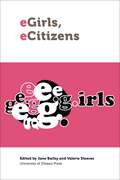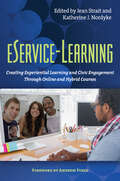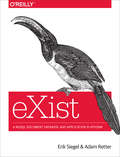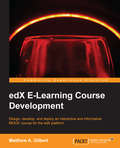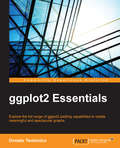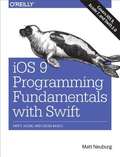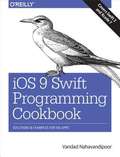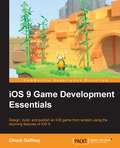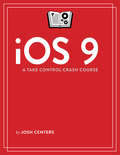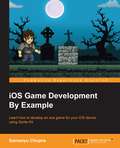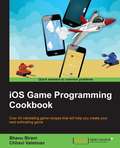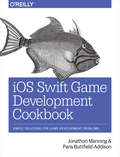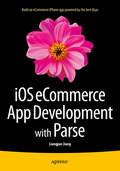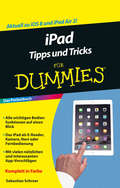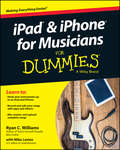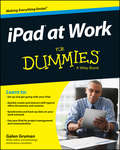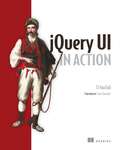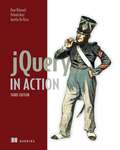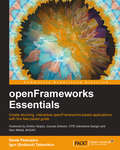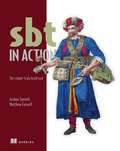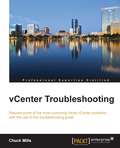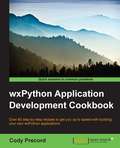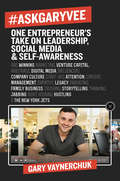- Table View
- List View
eGirls, eCitizens: Putting Technology, Theory and Policy into Dialogue with Girls’ and Young Women’s Voices (Law, Technology, and Media)
by Jane Bailey and Valerie SteeveseGirls, eCitizens is a landmark work that explores the many forces that shape girls’ and young women’s experiences of privacy, identity, and equality in our digitally networked society. Drawing on the multi-disciplinary expertise of a remarkable team of leading Canadian and international scholars, as well as Canada’s foremost digital literacy organization, MediaSmarts, this collection presents the complex realities of digitized communications for girls and young women as revealed through the findings of The eGirls Project (www.egirlsproject.ca) and other important research initiatives. Aimed at moving dialogues on scholarship and policy around girls and technology away from established binaries of good vs bad, or risk vs opportunity, these seminal contributions explore the interplay of factors that shape online environments characterized by a gendered gaze and too often punctuated by sexualized violence. Perhaps most importantly, this collection offers first-hand perspectives collected from girls and young women themselves, providing a unique window on what it is to be a girl in today’s digitized society. Published in English.
eService-Learning: Creating Experiential Learning and Civic Engagement Through Online and Hybrid Courses
by Jean Strait Katherine J. NordykeThis book serves as an introduction to using online teaching technologies and hybrid forms of teaching for experiential learning and civic engagement. Service-learning has kept pace neither with the rapid growth in e-learning in all its forms nor with the reality that an increasing number of students are learning online without exposure to the benefits of this powerful pedagogy.Eservice-learning (electronic service-learning) combines service-learning and on-line learning and enables the delivery of the instruction and/or the service to occur partially or fully online. Eservice-learning allows students anywhere, regardless of geography, physical constraints, work schedule, or other access limitations, to experience service-learning. It reciprocally also equips online learning with a powerful tool for engaging students.In eservice-learning, the core components of service, learning, and reflection may take a different form due to the online medium—for example, reflection often occurs through discussion board interactions, journals, wikis, or blogs in an eservice-learning course. Moreover, the service, though still community-based, creates a world of opportunities to connect students with communities across the globe—as well as at their very own doorstep.This book introduces the reader to the four emerging types of eservice-learning, from Extreme EService-Learning (XE-SL) classes where 100% of the instruction and 100% of the service occur online, to three distinct forms of hybrid where either the service or the instruction are delivered wholly on-line – with students, for instance, providing online products for far-away community partners – or in which both are delivered on-site and online. It considers the instructional potential of common mobile technologies – phones, tablets and mobile reading devices. The authors also address potential limitations, such as technology challenges, difficulties sustaining three-way communication among the instructor, community partner, and students, and added workload.The book includes research studies on effectiveness as well as examples of practice such drafting grants for a community partner, an informational technology class building online communities for an autism group, and an online education class providing virtual mentoring to at-risk students in New Orleans from across the country.
eXist: A NoSQL Document Database and Application Platform
by Erik Siegel Adam RetterGet a head start with eXist, the open source NoSQL database and application development platform built entirely around XML technologies. With this hands-on guide, you’ll learn eXist from the ground up, from using this feature-rich database to work with millions of documents to building complex web applications that take advantage of eXist’s many extensions.If you’re familiar with XML—as a student, professor, publisher, or developer—you’ll find that eXist is ideal for all kinds of documents. This book shows you how to store, query, and search documents with XQuery and other XML technologies, and how to construct applications on top of the database with tools such as eXide and eXist’s built-in development environment.Manage both data-oriented and text-oriented markup documents securelyBuild a sample application that analyzes and searches Shakespeare’s playsGo inside the architecture and learn how eXist processes documentsLearn how to work with eXist’s internal development environmentChoose among various indexes, including a full-text index based on Apache LuceneDive into eXist’s APIs for integrating or interacting with the databaseExtend eXist by building your own Triggers, Scheduled Tasks, and XQuery extension modules
edX E-Learning Course Development
by Matthew A. GilbertIf you are an educator creating a course for edX or a corporate trainer using Open edX for large-scale learning and development initiatives, then edX E-Learning Course Development is the ideal book for you.
ggplot2 Essentials
by Donato TeutonicoThis book is perfect for R programmers who are interested in learning to use ggplot2 for data visualization, from the basics up to using more advanced applications, such as faceting and grouping. Since this book will not cover the basics of R commands and objects, you should have a basic understanding of the R language.
iOS 8 Programming Fundamentals with Swift
by Matt NeuburgMove into iOS development by getting a firm grasp of its fundamentals, including the Xcode IDE, the Cocoa Touch framework, and Swift--Apple's new programming language. With this thoroughly updated guide, you'll learn Swift's object-oriented concepts, understand how to use Apple's development tools, and discover how Cocoa provides the underlying functionality iOS apps need to have.Explore Swift's object-oriented concepts: variables and functions, scopes and namespaces, object types and instancesBecome familiar with built-in Swift types such as numbers, strings, ranges, tuples, Optionals, arrays, and dictionariesLearn how to declare, instantiate, and customize Swift object types--enums, structs, and classesDiscover powerful Swift features such as protocols and genericsTour the lifecycle of an Xcode project from inception to App StoreCreate app interfaces with nibs and the nib editor, Interface BuilderUnderstand Cocoa's event-driven model and its major design patterns and featuresFind out how Swift communicates with Cocoa's C and Objective-C APIsOnce you master the fundamentals, you'll be ready to tackle the details of iOS app development with author Matt Neuburg's companion guide, Programming iOS 8.
iOS 8 Swift Programming Cookbook
by Vandad NahavandipoorEntirely rewritten for Apple's Swift programming language, this updated cookbook helps you overcome the vexing issues you're likely to face when creating apps for iOS devices.You'll find hundreds of new and revised recipes for using the iOS 8 SDK, including techniques for working with Health data and HomeKit accessories, enhancing and animating graphics, storing and protecting data, sending and receiving notifications, and managing files and folders among them. Each recipe includes sample code on GitHub that you can use right away.Use CloudKit APIs to store information in the cloud with easeCreate custom keyboards and extensionsAccess users' health-related information with HealthKitInteract with accessories inside the user's home with HomeKitCreate vibrant and lifelike user interfaces with UIKit DynamicsUse the Keychain to protect your app's dataDevelop location-aware and multitasking-aware appsWork with iOS 8's audio and video APIsUse Event Kit UI to manage calendars, dates, and eventsTake advantage of the accelerometer and the gyroscopeGet working examples for implementing gesture recognizersRetrieve and manipulate contacts and groups from the Address BookDetermine a camera's availability and access the Photo Library
iOS 9 Game Development Essentials
by Chuck GaffneyDesign, build, and publish an iOS game from scratch using the stunning features of iOS 9About This BookCreate storyboards in Xcode from concept to code and designChalk out your game's overall navigation and structureWork with 2D and 3D game development toolsWho This Book Is ForThis book is intended for game developers who wish to develop 2D and 3D games for iPhone and iPad. If you are a developer from another platform, or game engine such as Android or Unity, a current iOS developer wishing to learn more about Swift and the latest features of iOS 9, or even if you are new to game development, then this book is for you. Some prior programming knowledge is recommended, but not required.What You Will LearnFamiliarise yourself with both basic and advanced Swift game development codeUnderstand the structure and flow of a typical iOS appWork with the SpriteKit framework to make 2D games, sprites, and overlaysDiscover 3D game development with SceneKitVisually design levels and game assets with XCode 7's latest featuresExplore the concept of component-based structuring with iOS 9's GameplaykitBeta test and publish your game with iTunes ConnectIn DetailGame development has always been a combination of programming and art, and mobile game development is no exception to this rule. The iOS platform has been both a staple in the ever-growing mobile game market, as well as a launching point for many game developers (hobby and career-wise). The features and frameworks available in iOS 9 continue to cater to the synergy of design and computer engineering, using tools that allow developers to take a game idea from concept to application in record time.Whether you are new to iOS and game development as a whole, or are an experienced programmer wanting to learn the latest features of the platform, iOS 9 Game Development Essentials will provide you with crucial insight into this widely used platform.Starting with the Swift programming language, this book gets the ball rolling with code concepts and game-centric code samples right from the get-go, giving you get a solid understanding of Apple's cutting-edge programming language. The book takes you through iOS game development concepts and introduces the various frameworks that allow you to develop robust, reusable, and intelligent game components in both 2D and 3D game environments.Style and approachThis book is a step-by-step guide into the code and concepts of iOS apps. Each chapter contains diagrams that showcase the features of the platform, along with code samples from Apple and code samples exclusive to this book.
iOS 9: A Take Control Crash Course
by Josh CentersCome up to speed on iOS 9's new features!Guided by TidBITS Managing Editor Josh Centers, you'll get a close look at iOS 9's new (and old) capabilities on the iPad, iPhone, and iPod touch, along with directions for putting them to use right away.A What's New chapter gives you an overview of iOS 9's many changes -- including those in Siri, Spotlight, and Safari. The rest of the book describes the details, such as how those with recent iPads can use the new Split Screen, Slide Over, and Picture in Picture multitasking views, plus how to use Mail's new features, how iOS 9 helps you save battery power, the trick to finding the hidden iCloud Drive app, the iPad's new Trackpad mode, and much more. Special topics cover Family Sharing, accessibility, privacy, and managing data usage.Josh helps you use iOS more effectively than ever with advice on:What to check after installing iOS 9Which iPads support the new multitasking viewsWhat to expect from the iPhone's new Low Power modeWhat the new Batteries widget does and how to display itHow to use a 4-digit passcode on a Touch ID deviceWhich cities have transit directions in MapsInterpreting the icons in the Camera app's viewfinderAdding a person to a Messages group chatLetting people through an iPhone's Do Not Disturb cone of silenceStoring credit card details in SafariSetting up Apple Pay in the new Wallet appEntering and accessing emergency medical informationCustomizing Spotlight's search results so they work for youMaking Siri talk like a guy (or gal)Telling Siri who you mean when you say "Call Mom"Putting an outline around text "buttons" so they look like buttonsWhat's a Crash Course? As part of our Crash Course series, this book splits the first-rate content you expect from Take Control into short chunks so you can dip in and read quickly. Because so many Take Control readers provide tech support to others, each concise chapter has sharing buttons and practical tweet-tips, making it easy to freely share a chapter with Facebook friends, Twitter followers, and others who really need the information. Take Control Crash Courses have a modern, magazine-like layout in PDF and a reflowable design in the EPUB and Mobipocket.
iOS Game Development By Example
by Samanyu ChopraLearn how to develop an ace game for your iOS device, using Sprite Kit About This Book * Learn about the Sprite Kit engine and create games on the iOS platform from the ground up * Acquaint your Sprite Kit knowledge with Swift programming and turn your 2D game conceptualization into reality in no time * An abridged and focused guide to develop an exhaustive mobile game Who This Book Is For This book is for beginners who want to start their game development odyssey in the iOS platform. If you are an intermediate or proficient game developer hailing from a different development platform, this book will be a perfect gateway to the Sprite Kit engine. The reader does not need to have any knowledge of Sprite Kit and building games on the iOS platform. What You Will Learn * Learn about the Sprite Kit game engine and create indie games in no time * Set sail on the quest of game development career by successfully creating a runner game * Know more about the IDE provided by Apple for game development - Xcode * Get an overview of Apple's latest programming language, Swift * Discover the functionalities of scenes and nodes in a game * Explore how physics bodies work and how to add this feature into your game * Grasp knowledge of particle effect and shaders * Add a scoring system into your game to visualize high scores In Detail Game development has always been an exciting subject for game enthusiasts and players and iOS game development takes a big piece of this cake in terms of perpetuating growth and creativity. With the newest version of iOS and Sprite Kit, comes a series of breathtaking features such as Metal rendering support, camera nodes, and a new and improved Scene Editor. Conceptualizing a game is a dream for both young and old. Sprite Kit is an exciting framework supported by Apple within the iOS development environment. With Sprite Kit, creating stunning games has become an easy avenue. Starting with the basics of game development and swift language, this book will guide you to create your own fully functional game. Dive in and learn how to build and deploy a game on your iOS platform using Sprite Kit game engine. Go on a detailed journey of game development on the iOS platform using the Sprite Kit game engine. Learn about various features implemented in iOS 8 that further increase the essence of game development using Sprite Kit. Build an endless runner game and implement features like physics bodies, character animations, scoring and other essential elements in a game. You will successfully conceive a 2D game along with discovering the path to reach the pinnacle of iOS game development. By the end of the book, you will not only have created an endless runner game but also have in-depth knowledge of creating larger games on the iOS platform. Style and approach An easy-to-follow, comprehensive guide that makes your learning experience more intriguing by gradually developing a Sprite Kit game. This book discusses each topic in detail making sure you attain a clear vision of the subject.
iOS Game Programming Cookbook
by Bhanu Birani Chhavi VaishnavThis book is for developers who are willing to explore iOS game programming in depth. Good knowledge level and understanding of iOS game development will be an added advantage. You should already have a working installation of Xcode and Sprite kit.
iOS Swift Game Development Cookbook
by Paris Buttfield-Addison Jonathon ManningReady to make amazing games for the iPhone, iPad, and iPod touch? With Apple's Swift programming language, it's never been easier. This updated cookbook provides detailed recipes for a managing wide range of common iOS game-development issues, ranging from 2D and 3D math to SpriteKit and OpenGL to performance--all revised for Swift.You get simple, direct solutions to common problems found in iOS game programming. Need to figure out how to give objects physical motion, or want a refresher on gaming-related math problems? This book provides sample projects and straightforward answers. All you need to get started is some familiarity with iOS development, Swift, and Objective-C.Design the architecture and code layout of your gameBuild and customize menus with UIKitDetect and respond to user inputUse techniques to play sound effects and musicLearn different ways to store information for later useCreate 2D graphics with SpriteKitCreate 3D graphics with SceneKitAdd two-dimensional physics simulationLearn beginning, intermediate, and advanced 3D graphics with OpenGLCreate challenges with artificial intelligenceTake advantage of game controllers and external displays
iOS eCommerce App Development with Parse
by Liangjun JiangiOS eCommerce App Development with Parse uses a real-world app example to teach you how to build a complete eCommerce iPhone app powered by Parse--the most popular and powerful Platform as a Service (PaaS) provider. In this comprehensive guide you will learn about collecting application requirements, architecting the app, designing the user interface, creating the data model, managing products and the shopping cart, processing the payment, and fulfilling the order--always with secure best practice in mind. You will also learn how to manage user account creation, log in with Facebook and Twitter, verify users via email, pay with Stripe and Apple Pay, send email with Mailgun, and manage customer payment methods and order history. Intermediate knowledge of iOS development and object-oriented programming is assumed, and basic knowledge of e-commerce principles will be of benefit too. The author is a successful iPhone app developer whose real-world experience is now brought to print. Master iOS eCommerce app development with Parse today. What you'll learn Get to know Parse and its products, the most popular and powerful Platform as a Service (BaaS) provider. Learn what it takes to develop a real world e-commerce iPhone app. Secure your app and user data. Incorporate the Stripe payment gateway and Mailgun email service. Develop a scalable app that is also easy to maintain. Extend all examples to match the needs of your own app. Who this book is for iOS eCommerce App Development with Parse is for experienced iPhone developers confident with Objective-C, iOS and XCode, who want to build an eCommerce iPhone app. If you don't have the experience of implementing a fully functional backend, but still want to build a mobile app with web services, this book is for you. It is ideal for mobile app developers who want to enhance their skills and learn new tools. Table of Contents Section 1: Architecture Chapter One: Requirement Chapter Two: Prototype Chapter Three: Parse Fundamentals Chapter Four: Project Setup Section 2: Products Chapter Five: Product Category Chapter Six: Products Chapter Seven: Product Detail Section 3: User Chapter Eight: Sign Up Chapter Nine: Log In Chapter Ten: Login with Facebook Section 4: Checkout Chapter Eleven: a Shopping Bag Chapter Twelve: Shipping Address Chapter Thirteen: Pay with Credit Card Chapter Fourteen: Pay with Apply App Chapter Fifteen: Charge and Email Section 5: My Account Chapter Sixteen: My Account Overview Chapter Seventeen: My Payment Methods Chapter Eighteen: My Order History Chapter Nineteen: My Favorites Section 6: UI Improvement and Promotion Chapter Twenty: UI Improvement Chapter Twenty-One: Promotion Section 7: Security and More from Parse Chapter Twenty-Two: Security Chapter Twenty-Three: Crash Report and Analytics
iPad Tipps und Tricks für Dummies (Für Dummies)
by Sebastian SchroerKitzeln Sie das Beste aus Ihrem iPad heraus Mit dem iPad kann man weitaus mehr, als im Internet surfen und E-Mails verschicken. Das schicke Tablet vereint Computer, Fotoalbum, Navigationsgerät, E-Book-Reader, Tageszeitung, Multimediazentrale und vieles mehr! Mit diesem Buch entdecken Sie, was Ihr iPad alles zu bieten hat, wie Sie es am einfachsten und schnellsten bedienen, es ganz nach Ihren Wünschen einrichten und vor unerlaubtem Zugriff schützen. Außerdem verrät Ihnen Sebastian Schroer, welche Apps Ihr Leben vereinfachen, bereichern oder einfach jede Menge Spaß machen!
iPad and iPhone For Musicians For Dummies
by Ryan C. Williams Mike LevineThe easy way to use your iPad or iPhone to make amazing music If you are a budding or established musician looking to use your iPad or iPhone as a portable musical instrument, recording studio, or composition tool, then you've come to the right place! iPad and iPhone For Musicians For Dummies explains in plain English how to hook up your preferred instrument to your iPad or iPhone to work on music projects within a plethora of recording apps. You'll also learn how to incorporate both real and MIDI instruments and audio, edit individual tracks, work with effects and chain multiple apps together, and mix and master songs. Thanks to apps such as AmpliTube, AudioBus, and Apple's own GarageBand, musicians can record entire songs in the comfort of their own homes and then mix, master, and distribute them right there on their iPads or iPhones. Packed with tons of step-by-step instructions, this friendly guide shows you how to use your device to go from recording a basic piece of music to creating and uploading complete songs with full instrumentation and multiple tracks, instruments, and effects. Demonstrates how to hook up your guitar or keyboard directly to your iPad or iPhone to record professional-grade tracks Helps musicians get the most out of their iPads or iPhones as portable musical instruments, recording studios, and composition tools Written by an industry expert and former senior writer for IK Multimedia, a leading manufacturer of music apps and hardware accessories for the iOS market Coverage goes beyond GarageBand to include other popular technologies Don't let the limitations and expense of yesterday's home studios keep you from recording awesome music--let iPad and iPhone For Musicians For Dummies show you how easy it is to record and master your own music right from your living room.
iPad at Work For Dummies
by Galen GrumanGet the most out of using your iPad at work iPad at Work For Dummies provides essential and in-depthcoverage for a variety of productivity-related tasks made possibleon the iPad, from basics such as setting up and starting out withan iPad to tips on the best practices for enterprise-level wordprocessing, spreadsheet creation, presenting, task management,project management, graphic design, and communication. Beyond that,it also includes down-to-earth examples of how to use an iPad atwork, including synchronization, data backup, and communicatingwith Windows networks.Written by an experienced and well-known iPad user, writer,podcaster, and lecturer who has taught many other professionals howto get the most from their Apple devices in the workplace, iPadat Work For Dummies goes beyond simple coverage of iWork toshow you step-by-step the iPad's capabilities to quickly,professionally, and effectively create and interact with typicaloffice documents and systems.Covers the best software and practices for productivelyintegrating the iPad into a work environmentShows you how the iPad goes beyond use as an at-home device tomake work easierIncludes examples that bring the information and instructionsto lifeIf you're considering integrating the use of an iPad at work, orhave recently begun and want to grasp the full spectrum of itscapabilities in the workplace, iPad at Work For Dummies hasyou covered.
iPhone 6s Portable Genius: Covers iOS9 and all models of iPhone 6s, 6, and iPhone 5 (Portable Genius)
by Paul McFedriesTake a bite out of all your iPhone has to offer As easy and intuitive as the iPhone is, it's more complex than most of us realize—and what's better than learning all the insider tips and tricks with the iPhone Portable Genius, 3rd Edition? Whether you're just starting out with your first iPhone or upgrading to a newer model, this full-color guide will have you tapping, swiping, and typing like an Apple genius in no time. You'll find essential information about iOS, Siri, iCloud, and how to use your phone to manage, organize, and navigate your life. Written in clear, no-nonsense language, iPhone Portable Genius, 3rd Edition offers expert tips and tricks that will save you time and hassles—and help you unlock all your device has to offer. Designed for the visual learner, it provides plenty of full-color screenshots that illustrate exactly what you'll see and do on your iPhone. Plus, 'Genius Icons' throughout the text highlight smarter, more innovative ways to do what you need to do. So what are you waiting for? Everything you need to truly make the most of your iPhone is here. Connect to a network, configure your settings, and work with iCloud Max out the media features, surf the Web, and check your e-mail Manage your contacts, appointments, e-books, and libraries Sync your apps, photos, music, and more
iPhone Portable Genius
by Paul McfedriesLearn how to get even more out of your iPhone 5s, 6, and 6 PlusiPhone Portable Genius, 2nd Edition is packed with practical advice and covers all the key features in clear, no-nonsense language accessible to those new to the iPhone family or iOS 8. Even experienced iPhone users can discover new tips and tricks that help save time and eliminate hassles. This full-color guide is designed for the visual learner, featuring plenty of screenshots that illustrate various techniques. Genius icons highlight smarter, more innovative ways to do what you need to do better and faster. You'll find essential information about iOS, Siri, iCloud, and learn how to use your iPhone to manage, organize, and navigate your life.Each new iPhone release inspires fervor as consumers clamor to get their hands on the latest and greatest. Why the excitement? Because as seamlessly functional as the iPhone is, it just keeps getting better. iPhone Portable Genius, 2nd Edition teaches you the techniques that translate across generations and upgrades as well as the fundamentals of iOS. Learn to:Connect to a network, configure your settings, and work with iCloudMax out the media features, surf the Web, and check your e-mailManage your contacts, appointments, e-books, and librariesSync your apps, photos, music, and moreA comprehensive index designed for easy navigation, clear, concise instruction, and a small, portable size make this handy guide ideal for new iPhone users. Making calls is only the beginning, and iPhone Portable Genius, 2nd Edition shows you how much your iPhone has to offer.
jQuery UI in Action
by TJ VanTollSummaryjQuery UI in Action is a practical guide to using and customizing jQuery UI library components to build rich, user-friendly web applications. By working through numerous engaging examples, you'll move quickly from placing a datepicker on the page to building a complete user interface that includes features like a contact form and shopping cart. You'll master jQuery UI's five main interactions—draggable, droppable, resizable, selectable, and sortable—and learn UI techniques that work across all devices.Purchase of the print book includes a free eBook in PDF, Kindle, and ePub formats from Manning Publications.About the BookYou're only one tag away from richer user interfaces — ‹script src="jquery-ui.js"›. The jQuery UI library simplifies web UI development by providing robust widgets, interactions, and effects you can use immediately. It includes datepickers, autocompletes, tooltips, and a whole lot more. And, jQuery UI's powerful widget factory makes it a snap to customize existing components to meet your needs.jQuery UI in Action is a practical guide to using and customizing jQuery UI library components. By working through numerous examples, you'll quickly master jQuery UI's twelve widgets and five interactions—draggable, droppable, resizable, selectable, and sortable. The engaging examples illustrate techniques that work across all devices. You'll use the widget factory to create reusable plugins and discover jQuery UI's CSS theming system that allows you to create a custom, cohesive look for your sites and your applications.Written for front-end developers and web designers with a basic understanding of jQuery.What's InsideCreate interactions that work on any deviceCustomizable widgets for web and mobile appsWritten by a member of the core jQuery UI teamCovers jQuery UI 1.11About the AuthorA professional web developer, TJ VanToll is a member of the jQuery UI core team.Table of ContentsPART 1 MEET JQUERY UIIntroducing jQuery UIEnhancing UIs with widgetsPART 2 JQUERY UI COREBuilding complex web forms with jQuery UIEnhancing interfaces with layout and utility widgetsAdding interaction to your interfacesCreating rich animations with effectsTheming and styling applications with jQuery UIPART 3 CUSTOMIZATION AND ADVANCED USAGEUsing the widget factory to build stateful pluginsExtending widgets with the widget factoryPreparing your application for productionBuilding a flight-search applicationUnder the hood of jQuery UI
jQuery in Action
by Bear Bibeault Aurelio De Rosa Yehuda KatzSummaryjQuery in Action, Third Edition, is a fast-paced and complete guide to jQuery, focused on the tasks you'll face in nearly any web dev project. Written for readers with minimal JavaScript experience, this revised edition adds new examples and exercises, along with the deep and practical coverage you expect from an In Action book. You'll learn how to traverse HTML documents, handle events, perform animations, write plugins, and even unit test your code. The unique lab pages anchor each concept with real-world code. Several new chapters teach you how to interact with other tools and frameworks to build modern single-page web applications.Purchase of the print book includes a free eBook in PDF, Kindle, and ePub formats from Manning Publications.About the TechnologyThanks to jQuery, no one remembers the bad old days when programmers manually managed browser inconsistencies, CSS selectors support, and DOM navigation, and when every animation was a frustrating exercise in raw JavaScript. The elegant, intuitive jQuery library beautifully manages these concerns, and jQuery 3 adds even more features to make your life as a web developer smooth and productive.About the BookjQuery in Action, Third Edition, is a fast-paced guide to jQuery, focused on the tasks you'll face in nearly any web dev project. In it, you'll learn how to traverse the DOM, handle events, perform animations, write jQuery plugins, perform Ajax requests, and even unit test your code. Its unique Lab Pages anchor each concept in real-world code. This expanded Third Edition adds new chapters that teach you how to interact with other tools and frameworks and build modern single-page web applications.What's InsideUpdated for jQuery 3DOM manipulation and event handlingAnimations and effectsAdvanced topics including Unit Testing and PromisesPractical examples and labsAbout the ReadersReaders are assumed to have only beginning-level JavaScript knowledge.About the AuthorsBear Bibeault is coauthor of Secrets of the JavaScript Ninja, Ajax in Practice, and Prototype and Scriptaculous in Action. Yehuda Katz is an early contributor to jQuery and cocreator of Ember.js. Aurelio De Rosa is a full-stack web developer and a member of the jQuery content team.Table of ContentsPART 1 STARTING WITH JQUERYIntroducing jQueryPART 2 CORE JQUERYSelecting elementsOperating on a jQuery collectionWorking with properties, attributes, and dataBringing pages to life with jQueryEvents are where it happens!Demo: DVD discs locatorEnergizing pages with animations and effectsBeyond the DOM with jQuery utility functionsTalk to the server with Ajax 260Demo: an Ajax-powered contact formPART 3 ADVANCED TOPICSWhen jQuery is not enough...plugins to the rescue!Avoiding the callback hell with DeferredUnit testing with QUnitHow jQuery fits into large projects
openFrameworks Essentials
by Denis Perevalov Igor Sodazot TatarnikovIf you are a programmer, visual artist, or designer with experience in creative coding, and want to use openFrameworks to create fun, stunning, and interactive applications, this is the book for you. Basic knowledge of programming languages, such as C++, Java, Python, or JavaScript, will be enough to proceed with the book.
sbt in Action: The simple Scala build tool
by Josh Suereth Matthew FarwellSummaryA tutorial about effectively building Scala projects, sbt in Action introduces the sbt tool with a simple project that establishes the fundamentals of running commands and tasks. Next, it shows you how to use the peripheral libraries in sbt to make common tasks simpler. Finally, it covers how to deploy software effectively. You'll learn to appreciate how sbt improves the process of developing software, not just running builds.Purchase of the print book includes a free eBook in PDF, Kindle, and ePub formats from Manning Publications.About the Technologysbt is a build tool native to Scala that can transform any build scenario into a streamlined, automated, and repeatable process. Its interactive shell lets you customize your builds on the fly, and with sbt's unique incremental compilation feature, you can update only the parts of your project that change, without having to rebuild everything. Mastering sbt, along with the right patterns and best practices, is guaranteed to save you time and trouble on every project.About the Booksbt in Action, first and foremost, teaches you how to build Scala projects effectively. It introduces the sbt tool with a simple project that establishes the fundamentals of running commands and tasks. Next, it shows you how to use the peripheral libraries in sbt to make common tasks simpler. Along the way, you'll work through real projects that demonstrate how to build and deploy your projects regardless of development methodology or process.What's InsideMaster sbt's loosely coupled librariesEffectively manage dependenciesAutomate and simplify your buildsCustomize builds and tasksAbout the ReaderReaders should be comfortable reading Scala code. No experience with sbt required.About the AuthorsJosh Suereth is an engineer at Typesafe and the author of Manning's Scala in Depth. Matthew Farwell is a senior developer and the author of the Scalastyle style checker.Table of ContentsPART 1 WHY SBT?Why sbt?Getting startedPART 2 UNDERSTANDING SBT'S CORE CONCEPTSCore conceptsThe default buildPART 3 WORKING WITH SBTTestingThe IO and Process librariesAccepting user inputUsing plugins and external librariesDebugging your buildPART 4 EXTENDING SBTAutomating workflows with commandsDefining a pluginPART 5 DEPLOYING YOUR PROJECTSDistributing your projects
vCenter Troubleshooting
by Chuck MillsThe book is designed for the competent vCenter administrator or anyone who is responsible for the vSphere environment. It can be used as a guide by vSphere architects and VMware consultants for a successful vSphere solution. You should have good knowledge and an understanding of core elements and applications of the vSphere environment.
wxPython Application Development Cookbook
by Cody PrecordOver 80 step-by-step recipes to get you up to speed with building your own wxPython applications About This Book * This book empowers you to create rich cross-platform graphical user interfaces using Python * It helps you develop applications that can be deployed on Windows, OSX, and Linux * The recipes in the book involve real-world applications, giving you a first-hand experience of the practical scenarios Who This Book Is For For those who are familiar with programming in Python and want to start building applications with graphical user interfaces, this book will get you up and running quickly. A basic understanding of the Python programming language and object-oriented concepts are all that is needed. What You Will Learn * Create full featured user interfaces * Design and develop custom controls * Deploy and distribute wxPython applications to Windows, Macintosh OS X, Linux, and other UNIX-like environments * Handle and respond to application events * Manage and display data using grids * Interact with web services from your GUI * Use Paint events to draw custom displays * Support the display of user interfaces in multiple languages In Detail wxPython is a GUI toolkit for the Python programming language built on top of the cross-platform wxWidgets GUI libraries. wxPython provides a powerful set of tools that allow you to quickly and efficiently building applications that can run on a variety of different platforms. Since wxWidgets provides a wrapper around each platform's native GUI toolkit, the applications built with wxPython will have a native look and feel wherever they are deployed. This book will provide you with the skills to build highly functional and native looking user interfaces for Python applications on multiple operating system environments. By working through the recipes, you will gain insights into and exposure to creating applications using wxPython. With a wide range of topics covered in the book, there are recipes to get the most basic of beginners started in GUI programming as well as tips to help experienced users get more out of their applications. The recipes will take you from the most basic application constructs all the way through to the deployment of complete applications. Style and approach This book is a collection of step-by-step recipes that introduce the various components and concepts of wxPython in a conversational and easy-to-follow way. Each recipe contains coded examples along with detailed explanations about the key points of each topic. Each topic is designed to introduce and show you how to use a single feature from the wxPython library.
#AskGaryVee: One Entrepreneur's Take on Leadership, Social Media, and Self-Awareness
by Gary VaynerchukThe New York Times bestselling author draws from his popular show #AskGaryVee to offer surprising, often outrageous, and imminently useful and honest answers to everything you’ve ever wanted to know—and more—about navigating the new world.Gary Vaynerchuk—the inspiring and unconventional entrepreneur who introduced us to the concept of crush it—knows how to get things done, have fun, and be massively successful. A marketing and business genius, Gary had the foresight to go beyond traditional methods and use social media tools such as Twitter, Facebook, and YouTube to reach an untapped audience that continues to grow.#AskGaryVee showcases the most useful and interesting questions Gary has addressed on his popular show. Distilling and expanding on the podcast’s most urgent and evergreen themes, Gary presents practical, timely, and timeless advice on marketing, social media, entrepreneurship, and everything else you’ve been afraid to ask but are dying to know. Gary gives you the insights and information you need on everything from effectively using Twitter to launching a small business, hiring superstars to creating a personal brand, launching products effectively to staying healthy—and even buying wine.Whether you’re planning to start your own company, working in digital media, or have landed your first job in a traditional company, #AskGaryVee is your essential guide to making things happen in a big way.
